
So much time is spent analyzing negatives in the NBA that sometimes we forget about the good things happening around the league.
Yes, the Cleveland Cavaliers are trapped in a slump and the Oklahoma City Thunder have started slowly, but we need to commend breakout rookies, surprise teams, improved veterans and sturdy units. Throw on your positive-outlook hat and let’s take a trip down the NBA’s optimist lane.
Atlanta Hawks: Taurean Prince
Taurean Prince worked into a regular role at the end of 2016-17, but whether he could sustain that level of production was a bit of a question. So far, so good. The Baylor product has contributed 13.6 points, 5.4 rebounds, 2.2 assists and 1.2 steals per game. Prince is shooting 44.2 percent from three-point range and 43.5 percent overall. Since the Hawks are headed for an early pick in the 2018 NBA draft, Prince should continue to average 30-plus minutes and solidify his place as a notable piece for the future.
Boston Celtics: Jayson Tatum
Jayson Tatum arrived in Boston as a heralded prospect who many thought would need a bit to transition successfully. Well, he’s shattered the timeline despite holding a larger share of minutes than anticipated. Tatum has helped the Celtics replace Gordon Hayward following his devastating leg injury, providing 14.3 points on 50.0 percent shooting. Tatum has also knocked down a scorching 52.9 percent of his long-distance attempts while playing well defensively. Boston knew he’d be an asset, but Tatum’s bright future is showing up sooner than expected.
Brooklyn Nets: DeMarre Carroll
Toronto opened cap space by shipping DeMarre Carroll to Brooklyn, but the move appears to have renewed the forward. After managing 8.9 points, 3.8 rebounds and 1.5 combined steals and blocks last year, Carroll has notched 13.2 points, 6.8 boards and 2.0 “stocks” through nine games. Although he leads the Nets in minutes, 28.2 per night isn’t an extraordinary number. Carroll has been efficient with his playing time. While this isn’t to suggest the 31-year-old is excelling, he’s doing more than just clogging the salary sheet. And that’s a win for Brooklyn.
Charlotte Hornets: Dwight Howard
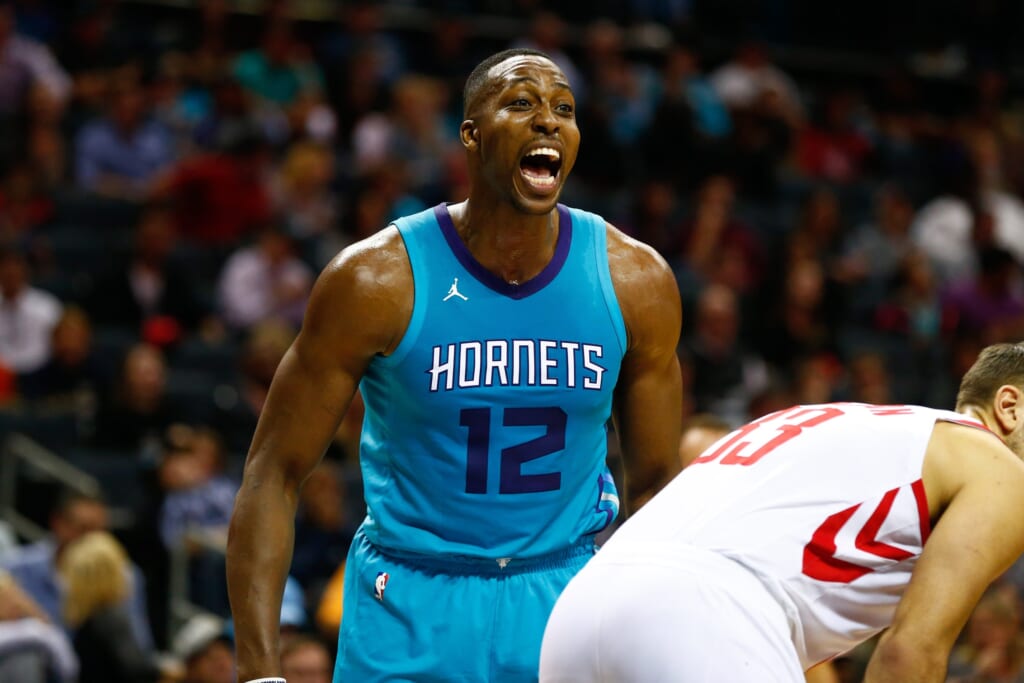
Dwight Howard is thriving in his new home. According to NBA.com, the Hornets have a 110.8 offensive rating and 101.5 defensive clip when he’s on the floor. And when Howard hits the bench, those numbers flip to 92.7 and 107.7, respectively. In short, Charlotte is 24.4 points per 100 possessions better with Howard. That’s a stunning turnaround after a disappointing year in Atlanta. The 31-year-old is averaging 15.2 points and 13.2 rebounds for the Hornets, who ultimately may reach the postseason thanks to Howard.
Chicago Bulls: Lauri Markkanen
With Nikola Mirotic recovering and Bobby Portis suspended, Chicago needed rookie forward Lauri Markkanen to lead the frontcourt. That’s a major responsibility for a first-year player, but he’s done surprisingly well in the difficult situation. Markkanen has tallied 15.8 points on 43.5 percent shooting — including a 38.1 clip beyond the arc — and grabbed 8.2 rebounds per game. According to Basketball-Reference, Chuck Person and Boston Celtics legend Larry Bird are the only rookies to ever record 16 points, eight rebounds and a 35 percent three-point rate. Not a bad start for Markkanen.
Cleveland Cavaliers: LeBron James’ free throws
Little else is going right for the Cavaliers, so it’s understandable if searching for a positive seems empty. Nevertheless, LeBron James has been shooting free throws at a career-best rate just months after trudging to the lowest clip of his 14 seasons. He only hit 67.4 percent at the charity stripe last year but is knocking down 83.9 percent at the line. Again, we’re not offended by the notion that this improvement isn’t important given Cleveland’s problems. But if the Cavs turn around the season as most expect, this may be a bigger story.
Dallas Mavericks: Dennis Smith Jr.
The Mavs are 2-10. So, yes, they’re already tanking while trying to win. At least Dennis Smith Jr. is playing like he’s supposed to, even if the numbers aren’t as positive as the Mavericks would prefer. On a team where losses are the norm, Smith still provides constant and consistent effort. He’s learning how to be a playmaker who sets up teammates, and his current form is accurately reflected in averages of 14.2 points and 4.9 assists but also 3.5 turnovers. Dallas needs to continue letting Smith make mistakes, because he’s the Mavericks’ hope for the future.
Denver Nuggets: Emmanuel Mudiay
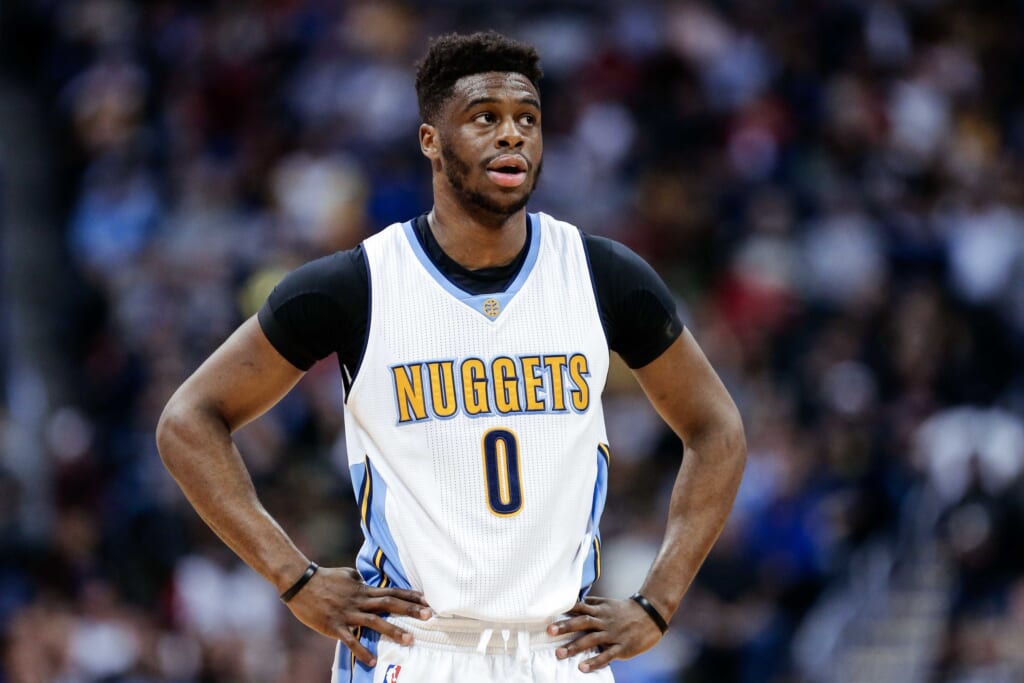
Now that Eric Bledsoe is off the market — more on that in a bit — Emmanuel Mudiay won’t be such a popular potential trade piece. That’s a fine development for the Nuggets, considering the departure of Jameer Nelson has brought out a different level of performance in Mudiay. The point guard has lifted his shooting percentages from 31.5 to 40.0 beyond the arc and from 37.7 to 39.3 overall. Mudiay, who started 107 games during his first two seasons, seems to have found a home coming off the bench. Sustaining this start is the big challenge, but patience is paying off in Denver.
Detroit Pistons: Andre Drummond’s free throws
Andre Drummond has dominated the glass since earning a full-time role in 2013-14. What he hasn’t done, however, is make free throws. Entering this season, the center’s best — best! — percentage in single campaign was an abysmal 41.8. But Drummond has tweaked his form, and the result is a stunning change in efficiency at the stripe. He’s taken 40 free throws and connected on 30. For comparison’s sake, he hit just 15 every 40 attempts last year. Drummond even buried 14-of-16 free throws in a victory over Milwaukee. This is wonderful improvement for the 24-year-old.
Golden State Warriors: Jordan Bell
The Bulls traded Jordan Bell’s draft slot to Golden State for $3.5 million. That’s turning into a $3.5 million mistake for everyone else in the league. Bell isn’t yet a significant piece on the All-Star-heavy roster, but his never-ending energy should result in more minutes sooner rather than later. According to NBA.com, the Warriors boast a 120.9 offensive rating and 91.4 defensive clip with Bell on the floor. So, does he hold anything against Chicago for the trade? “No,” he said, per Connor Letourneau of the San Francisco Chronicle. “I might want to give them some money, honestly.”
Houston Rockets: Improvements on defense
Mike D’Antoni brought a fast-paced, high-scoring system to Houston, and it immediately paid off with a 111.8 offensive rating last year. However, the team’s 106.4 defensive clip ranked 18th in the league, per NBA.com. The Rockets are a little feistier on the point-stopping end so far this season. They’ve posted a 102.3 rating, which is the NBA’s ninth-best mark. Additionally, after finishing 21st in defensive rebounding percentage last season, Houston leads the category in 2017-18. As a result, the Rockets have soared from 26th in second-chance points allowed to third. A little defense goes a long way.
Indiana Pacers: Victor Oladipo
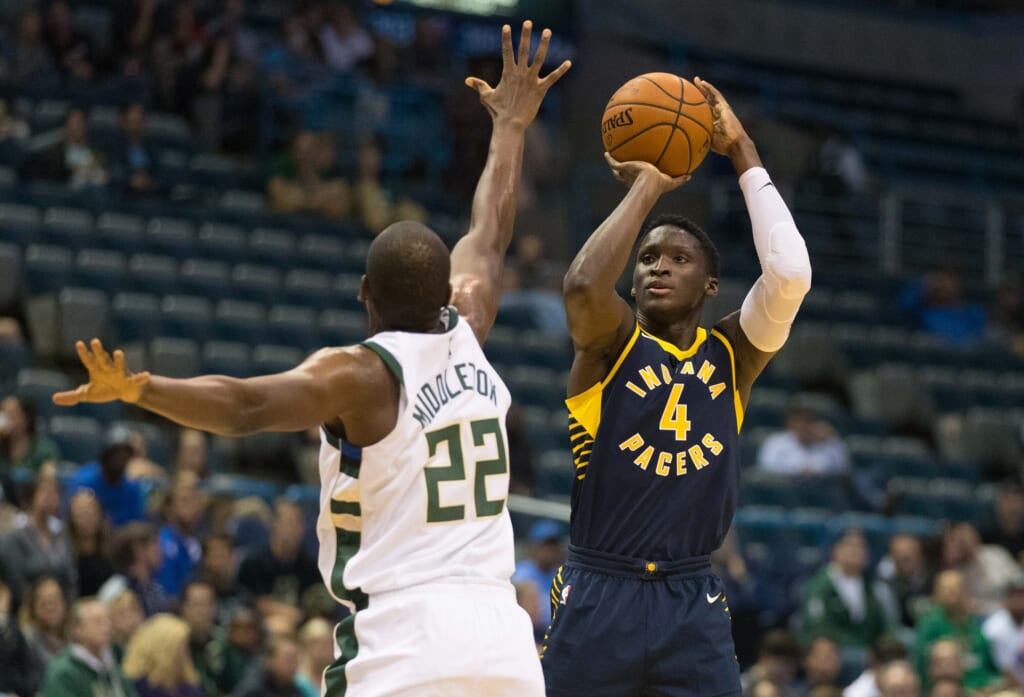
In the aftermath of the Victor Oladipo trade, and NBA executive told ESPN’s Tim MacMahon the deal was the “world’s smartest salary dump by [Oklahoma City].” Acquiring a superstar like Paul George will remain a wise decision for the Thunder, but Indiana’s return has been far more valuable than expected. Oladipo is averaging 23.0 points, 4.3 rebounds, 3.7 assists and 2.1 stocks this season. He’s posting career-high percentages of 44.1 from long distance and 46.8 overall while attempting more shots than ever. The Pacers don’t look so crazy, after all.
Los Angeles Clippers: Second-chance points
Despite showcasing one of the world’s best rebounders in DeAndre Jordan, the Clippers haven’t been known for excelling on the offensive glass. In each of the last three seasons, their highest NBA ranking in offensive rebounding percentage was 23rd. Through 10 games, however, LA has snatched 28.4 percent of its own misses to lead the league. Consequently, the Clips have soared from 24th in second-chance points per game to second. This has also helped LA reduce the effectiveness of transition, limiting opponents to 0.98 points per attempt.
Los Angeles Lakers: Kyle Kuzma
Kyle Kuzma nearly slid through the entire first round, but Los Angeles appears to have swiped a gem from Utah. The 27th overall pick of the 2017 draft, Kuzma has surged into the rotation and provided 15.4 points on 56.3 percent shooting. He’s also pulled down 6.3 rebounds and dished 1.4 assists per game. Kuzma has already notched three double-doubles and eclipsed the 20-point mark three times. While most of the attention surrounding the Lakers has centered on Lonzo Ball, Kuzma is clearly a candidate to earn an All-Rookie nod, too.
Memphis Grizzlies: Tyreke Evans
Tyreke Evans went to college at Memphis, and returning to the city has revived his career. After battling injury, logging a career-low 19.7 minutes and being sent from the Pelicans to the Kings last season, Evans has found a home. He’s accumulated 17.5 points — the highest mark of Evans’ career since his second NBA season — with personal-best clips of 43.1 percent from three-point range and 49.3 overall. Memphis signed the veteran for just $3.3 million this summer, and he’s proving to be a tremendous addition.
Miami Heat: James Johnson
Miami rewarded James Johnson with a $60 million contract following a career year, and he’s responded by giving the Heat another one. Though the forward has only received a minimal uptick in minutes, Johnson has contributed 13.6 points, 6.3 rebounds, 4.8 assists and 1.3 steals per game. All of those would be career-high averages. His versatility on both ends is especially valuable for a Miami team that has struggled through the early part of the campaign.
Milwaukee Bucks: What it took to acquire Eric Bledsoe
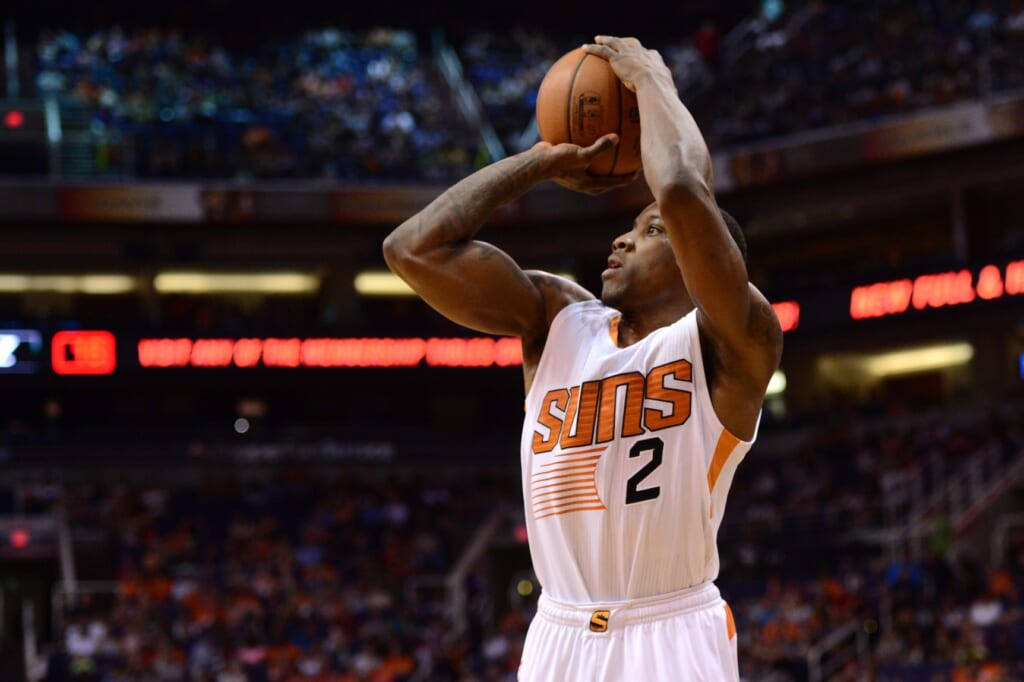
The Suns made it clear they were moving on from Eric Bledsoe. The Bucks immediately became a terrific landing spot, but a trade seemed to require parting with one of Jabari Parker, Thon Maker or Malcolm Brogdon along with a first-round pick. As it turns out, Milwaukee managed to acquire Bledsoe while keeping all three young talents. The Bucks only shipped Greg Monroe and protected picks to Phoenix. Giannis Antetokounmpo’s rapid development already made Milwaukee a playoff threat; Bledsoe’s arrival means the franchise has an intriguing two-year window for more — at worst.
Minnesota Timberwolves: Nemanja Bjelica
Just as everyone expected, among players averaging at least 15 minutes per game, the league-leader in effective field-goal percentage and true shooting percentage is Nemanja Bjelica. Wait, what?! The sweet-shooting forward has knocked down 62.5 percent of his three-pointers and 63.6 overall, resulting in a stellar 80.7 eFG% and 83.2 TS%. Those formulas consider the value of threes being greater than the two and free throws. He certainly isn’t in the same category as Karl-Anthony Towns, Jimmy Butler or Andrew Wiggins, but Bjelica is an important player for the Timberwolves.
New Orleans Pelicans: DeMarcus Cousins
DeMarcus Cousins is having a career year. So far, he’s recorded personal-best marks of 38.3 minutes, 28.9 points, 13.6 rebounds, 5.8 assists, 1.7 steals and 1.9 blocks along with an 81.3 free-throw percentage. Cousins is also launching 7.5 three-pointers per game, which unsurprisingly leads all centers and is a top-10 clip in the league. Despite shooting 33.7 percent from there, Cousins is still at 47.1 percent overall — which would be the second-most efficient year of his career. Between him and Anthony Davis, there isn’t a more productive frontcourt in the league.
New York Knicks: Kristaps Porzingis

Following a horrid opening week, the Knicks have rattled off six victories in seven games. Tim Hardaway Jr. has started shooting at a not-dreadfully-terrible rate, but the biggest reason is Kristaps Porzingis. Put simply, the Unicorn is absurd. He’s casually ripping 30-footers while scoring 30 points per game, which ranks second in the NBA. All of Porzingis’ shooting marks — 38.0 percent beyond the arc, 51.2 overall and 60.7 true shooting — are the highest of his career. Throw in his 2.3 blocks per game, and Porzingis is a first-team All-NBA candidate.
Oklahoma City Thunder: Raymond Felton
Russell Westbrook, Paul George and Carmelo Anthony are still learning how to play together. Oklahoma City is just 4-6 to begin the campaign. But lost in the slow start is a resurgent year from veteran point guard Raymond Felton. The 33-year-old boasts a personal-best 17.6 PER (player efficiency rating) while shooting 52.2 percent from long distance. That’s a remarkable 19.4 percent better than his career three-point average. Oklahoma City sports a plus-8.5 rating with Felton on the floor, according to NBA.com.
Orlando Magic: Nikola Vucevic
After hoisting just 26 three-pointers in his first five NBA seasons, Nikola Vucevic attempted 75 long-range shots last year. He finished the season with a 30.7 percentage, which certainly wasn’t great but was tolerable for someone who’d never been that player. All of the sudden, “Vooch” is a three-point threat in both volume and efficiency. He’s drained 40.5 percent from downtown while firing 4.2 attempts per game. The Magic have ascended from the second-worst three-point shooting team to the NBA’s second-best, and Vucevic is a key part of that turnaround.
Philadelphia 76ers: Ben Simmons
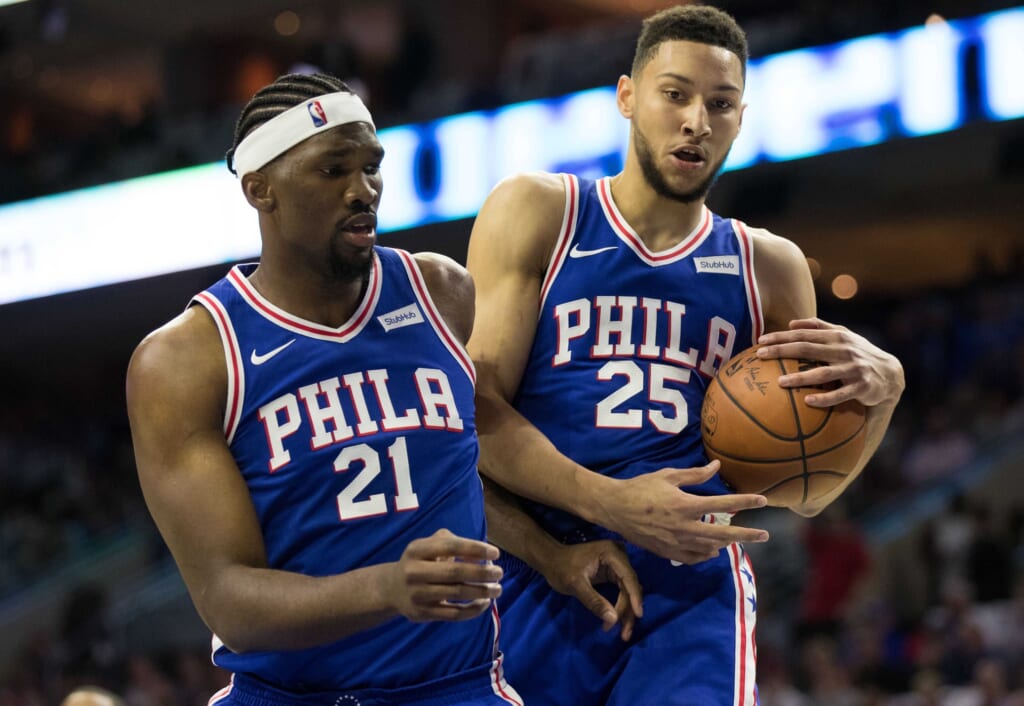
Here’s some breaking news: The No. 1 overall pick in the 2016 draft is, in fact, good. Ben Simmons missed all of last season due to a foot injury but has established himself as an all-around star in just 10 games. While never recording fewer than seven rebounds or five assists, Simmons has scored 17.8 points per game — without hitting a single three-pointer. The 6’10” point guard is a physical nightmare for perimeter defenders and too quick for a majority of forwards. Simmons and Joel Embiid are the most promising young duo in the NBA.
Phoenix Suns: Mike James
Every journey to the NBA is unique, and Mike James sure took an adventurous route. His college career started at Eastern Arizona College and ended at Lamar. After using up his eligibility, the point guard traveled overseas, making stops in Croatia, Italy, Greece and Spain with an appearance in Summer League for the Suns two years ago. Phoenix brought him back this summer, and James has just about solidified a future with the franchise. The 27-year-old rookie has earned a starting role and is averaging 11.7 points and 4.1 assists.
Portland Trail Blazers: Al-Farouq Aminu
It’s stunning, quite frankly, how much one defender can impact a team. Al-Farouq Aminu takes a back seat to Damian Lillard, C.J. McCollum and Jusuf Nurkic in terms of attention, but he’s a prototypical glue guy for the Blazers. Portland has recorded a 110.1 offensive rating and 93.5 defensive mark with Aminu on the floor, according to NBA.com. When he’s on the bench, those numbers flip to 101.1 and 106.0. The Blazers are 21.1 points per 100 possession better with Aminu in the game. He can’t return from an ankle injury soon enough.
Sacramento Kings: De’Aaron Fox
The 2017-18 season is progressing exactly as expected for the Kings: Not very well. Sacramento sits at 2-8 on the year and is destined for a high selection in the 2018 draft, which is loaded with promising power forwards and centers. The Kings shouldn’t necessarily lock their sights onto a big man — if Luka Doncic is there, you take him — but De’Aaron Fox appears to have settled one part of the backcourt. While his efficiency isn’t great right now, Fox has showed he’s capable of initiating offense, attacking the rim and creating scoring chances off the ball.
San Antonio Spurs: Dejounte Murray
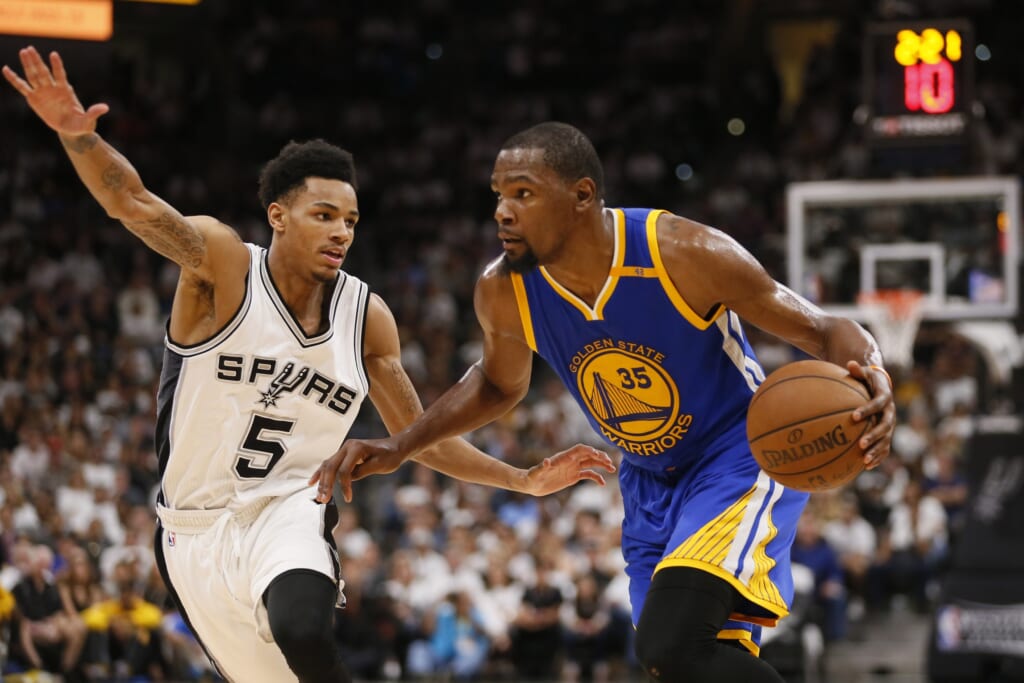
How did Dejounte Murray fall through the first round and land safely into the waiting arms of the Spurs at No. 29 overall in 2016? The second-year guard is currently playing 20-some minutes each night while Tony Parker recovers from an injury, and Murray’s production is highly encouraging. Sure, he’s battling the inconsistency every young player encounters, but he’s scored 10-plus points in five of San Antonio’s 11 games and dished at least three assists seven times. While the Spurs will rely on Parker when he’s eventually healthy, Murray should remain a regular contributor in preparation for a greater role in the future.
Toronto Raptors: Better ball movement
Toronto recorded the league’s lowest assist rate in 2016-17. In fact, according to John Schuhmann of NBA.com, the 47.2 clip was the worst mark by any team in 27 years. The Raptors are doing a much better job sharing the rock this season, registering a 55.0 assist percentage to date, per NBA.com. Granted, Toronto is currently trying to shake a little slump, but the first couple weeks of the campaign showed what ball movement can do for the Raptors. Once their three-point percentage regresses toward the mean, assist numbers will follow.
Utah Jazz: Steals, steals and more steals
Despite being one of the league’s best defensive teams last year, the Jazz rarely stole the ball. Their average of 6.7 swipes per game ranked second-worst in the league. What a difference one summer makes. Utah currently is third in the NBA with 9.9 steals, thanks to the active hands of Joe Ingles, Ricky Rubio, Donovan Mitchell and Thabo Sefolosha. The trend there is obvious, too. The Jazz traded for Rubio, drafted Mitchell and signed Sefolosha in free agency. Utah responded to Hayward’s departure by loading up on defense, and it’s paying dividends in the steals department.
Washington Wizards: Kelly Oubre
Not every young player can be expected to excel immediately. Kelly Oubre, quite simply, needed time to develop and transition to the NBA. After tallying 16 minutes, 5.2 points and 3.3 rebounds per night in 142 appearances over the last two years, Oubre has established himself in the rotation. He’s putting up 11.7 points and 5.7 rebounds in 31.7 minutes this season. Most impressively, the left-hander has elevated his three-point percentage from 29.6 to 49.0. Oubre’s development could be the fix Washington needed for its maligned bench.